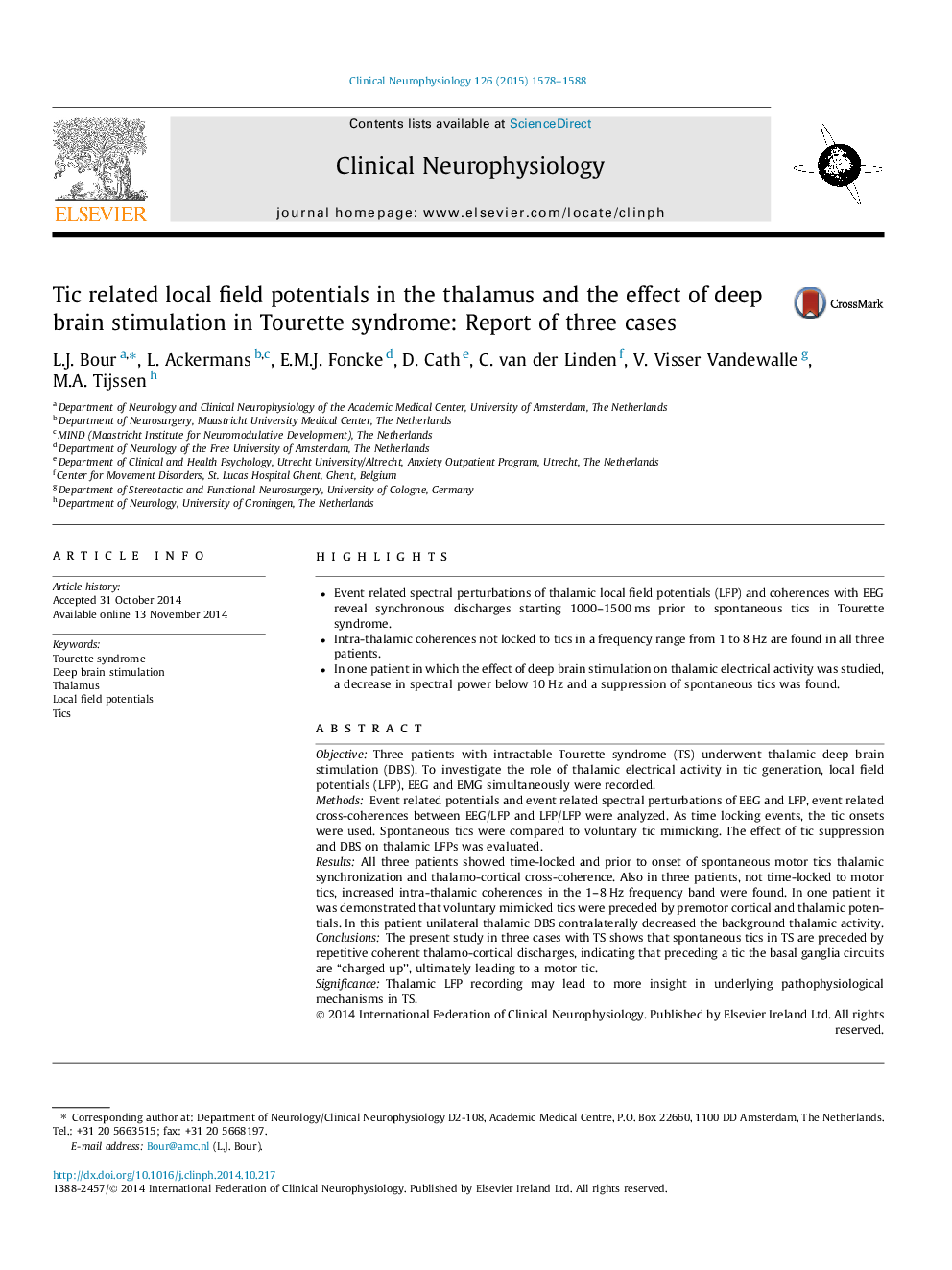| Article ID | Journal | Published Year | Pages | File Type |
|---|---|---|---|---|
| 3042559 | Clinical Neurophysiology | 2015 | 11 Pages |
•Event related spectral perturbations of thalamic local field potentials (LFP) and coherences with EEG reveal synchronous discharges starting 1000–1500 ms prior to spontaneous tics in Tourette syndrome.•Intra-thalamic coherences not locked to tics in a frequency range from 1 to 8 Hz are found in all three patients.•In one patient in which the effect of deep brain stimulation on thalamic electrical activity was studied, a decrease in spectral power below 10 Hz and a suppression of spontaneous tics was found.
ObjectiveThree patients with intractable Tourette syndrome (TS) underwent thalamic deep brain stimulation (DBS). To investigate the role of thalamic electrical activity in tic generation, local field potentials (LFP), EEG and EMG simultaneously were recorded.MethodsEvent related potentials and event related spectral perturbations of EEG and LFP, event related cross-coherences between EEG/LFP and LFP/LFP were analyzed. As time locking events, the tic onsets were used. Spontaneous tics were compared to voluntary tic mimicking. The effect of tic suppression and DBS on thalamic LFPs was evaluated.ResultsAll three patients showed time-locked and prior to onset of spontaneous motor tics thalamic synchronization and thalamo-cortical cross-coherence. Also in three patients, not time-locked to motor tics, increased intra-thalamic coherences in the 1–8 Hz frequency band were found. In one patient it was demonstrated that voluntary mimicked tics were preceded by premotor cortical and thalamic potentials. In this patient unilateral thalamic DBS contralaterally decreased the background thalamic activity.ConclusionsThe present study in three cases with TS shows that spontaneous tics in TS are preceded by repetitive coherent thalamo-cortical discharges, indicating that preceding a tic the basal ganglia circuits are “charged up”, ultimately leading to a motor tic.SignificanceThalamic LFP recording may lead to more insight in underlying pathophysiological mechanisms in TS.
